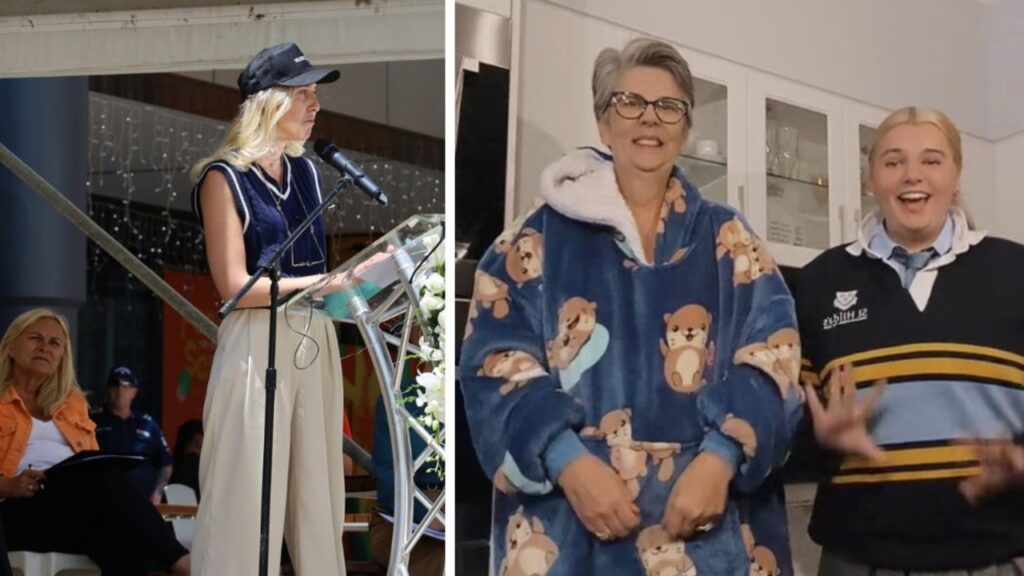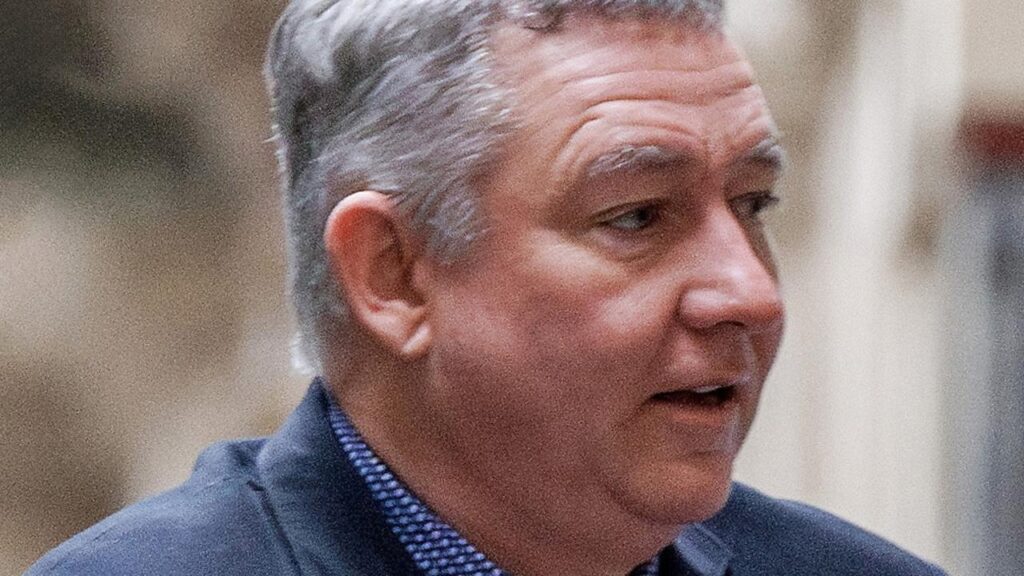Why this selfie is angering Aussie homeowners
Written by admin on July 2, 2024
Homeowners have been left fuming after a famous renter’s advocate posed in front of a vacant home and insinuated it could be easily broken into, but others are praising his message.
Tenant’s rights campaigner Jordan van den Berg, otherwise known as ‘Purplepingers’, is was accused of encouraging squatters by sharing an online list of abandoned homes he has stumbled across in Melbourne.
The list is aimed at helping people who are currently homeless or at risk of becoming homeless have shelter, the campaigner says.
He has now shared an image of himself on social media standing in front of an apparently abandoned home in the inner city suburb of Praharn, 5km south-east of Melbourne’s CBD.
The front door had been awkwardly locked with wire clothes hangers and padlocks, which Mr Van Den Berg said was an attempt to “keep people from entering”.
According to realestate.com.au, the median house price in Praharn is $1,745,500.
“Rich people really need to lock up their abandoned houses better, especially the ones still connected to electricity and water,” he wrote on the photo, posted to X, formerly Twitter.
The post was the latest of many where he highlights how many homes are currently being left empty or abandoned while many are struggling to secure stable housing.
His actions have angered some homeowners who argue it is their right to leave their homes empty if they want to.
In Australia, you can typically occupy a property if it looks abandoned and the doors are unlocked. However, if it is locked, you risk being charged with breaking and entering.
If you refuse to leave after being asked by the owner, it is classed as trespassing.
Heated backlash against Mr Van Den Berg exploded back in April when he shared the addresses of abandoned homes while stating that squatting was “not illegal”
“Fun fact, squatting in Australia is not necessarily illegal,” he said.
“Which is the best type of legal. Especially if the front door doesn’t actually lock.
“So yeah, here’s a free house if you want it.”
Have a story to share? Continue the conversation: tips@news.com.au
Speaking to news.com.au back in April, Mr van den Berg said he wanted to achieve three things with the controversial video.
“The number one motivation for it was to house people who need housing,” he said, reiterating his view that people in need of a home should squat in a vacant one.
“Number two was to prompt the government to act, to say that if they’re not going to do anything about land-banking, we can make them.
“People are struggling, and they have been struggling for a while, and it’s not getting better. It’s getting far worse. The government isn’t doing anything about it at the end of the day.
“And number three was to remind landlords that it is unethical to have a home sit empty during a housing crisis.”
A squatter can become the legal owner of a home if they stay there long enough. This is also known as adverse possession, the long-held legal tradition allows a person to take control of an abandoned property if they live or maintain it for 15 years in Victoria or 12 years in Queensland, NSW and Western Australia.
Owners can still evict anyone on their property before they reach that benchmark.
“Do you think it’s right?”
Mr van den Berg’s campaign caught the attention of the media and he appeared on The Project back in April to talk about his controversial plans.
The interview has been branded by many on social media as “out of touch” and “unbelievable.
He was grilled on his video and whether the encouragement of people to become squatters was a sensible solution to the rental crisis.
“I know we’re in a pretty serious housing crisis, but do you really think encouraging people to squat in private properties is the way to fix it?” The Project co-host Sarah Harris asked.
“Let me answer your question by asking you a question. Do you think it’s right we have thousands of vacant, abandoned homes while we have people living on the street?,” Mr van den Berg replied.
Harris said she didn’t, but asked whether solving the housing crisis should be focused on policy instead.
Later in the interview, panellist Steve Price wasn’t convinced there were that many vacant properties going, but Mr van den Berg pointed out he had received more than 300 submissions from Australians about empty houses in their suburbs.
He also revealed he is aware that desperate people are squatting in abandoned properties.
“If someone needs a house, they can reach out to me and I’ll send them [details about] an empty home,” he said.
Harris expressed shock that people would “basically camp out in abandoned houses with no power” but Mr van den Berg said “camping out inside” was likely better than sleeping on the streets or in a park.
Co-host Waleed Aly pushed Mr van den Berg on whether he was encouraging people to break the law, but he pointed out that squatting, when done properly, is not technically illegal.
Many have stated that he should be “arrested” for his actions with some even threatening to “smash the living s***” out of him.
One furious comment on X, formerly Twitter, read: “I would love for you to break into my house. It wouldn’t end well for you, comrade.”
Country in crisis
Australian renters have been hammered by steep price increases over the past few years, while rising demand and dwindling supply have sparked intense competition.
According to CoreLogic, rental growth has averaged 9.1 per cent per year for the past three years, in stark contrast to the average rate of annual growth of 2 per cent during the 2010s.
A survey conducted by the Tenants Union of New South Wales found 82.5 per cent of renters have been subjected to a recent increase in their housing costs.
As a result, 84 per cent had been forced to cut back on discretionary spending and other costs.
Research by advocacy group Everybody’s Home found almost half of Australians are in a state of housing stress, spending 30 per cent of their income or more on housing.
Young people aged 18 to 34 have it toughest, with half of the cohort spending 40 per cent of more. The current rental vacancy rate – that is, the proportion of all leased dwellings available on the market – is just one per cent at a national level, while in Sydney it’s 1.1 per cent.
More Coverage
In Melbourne it is at one per cent, and in Brisbane it’s 0.9 per cent, SQM Research data shows. Economists generally view a vacancy rate of less than two per cent to be a sign of a rental market in crisis.
At the same time, data from the 2021 Census showed 10 per cent of all residential dwellings were unoccupied on the night the national survey was conducted.
That equates to more than 1.04 million empty properties – many of which experts say might otherwise be available to tenants or homebuyers.







